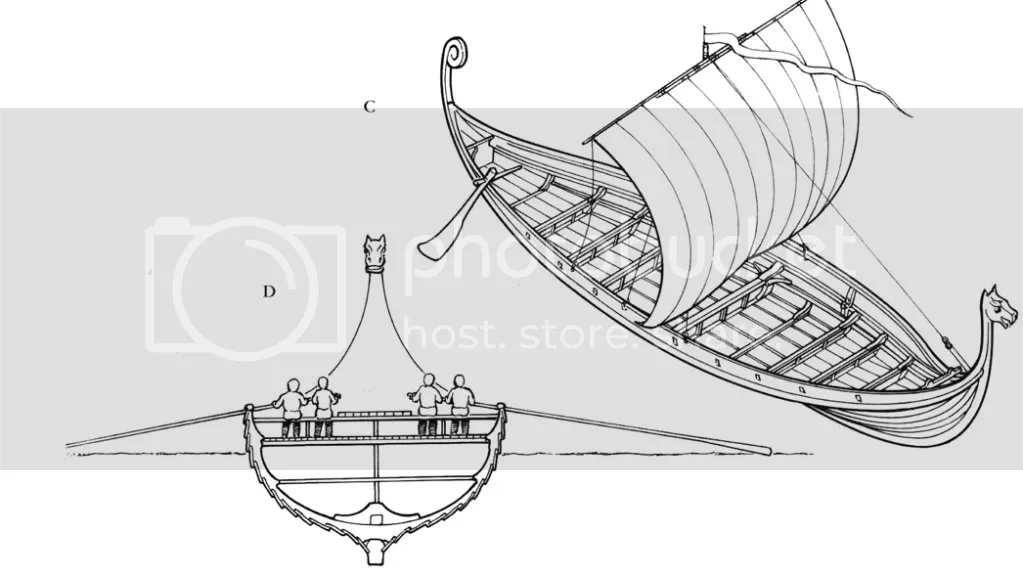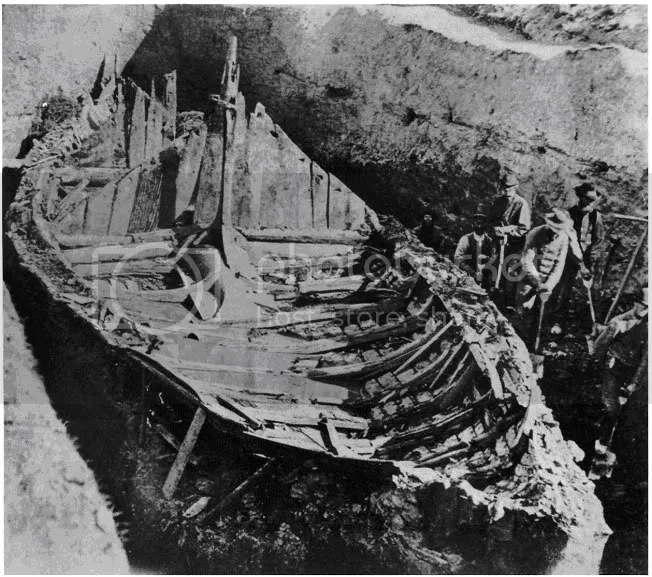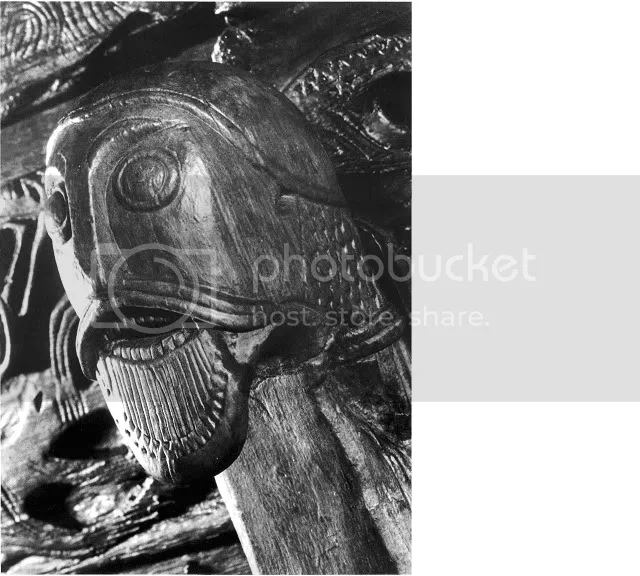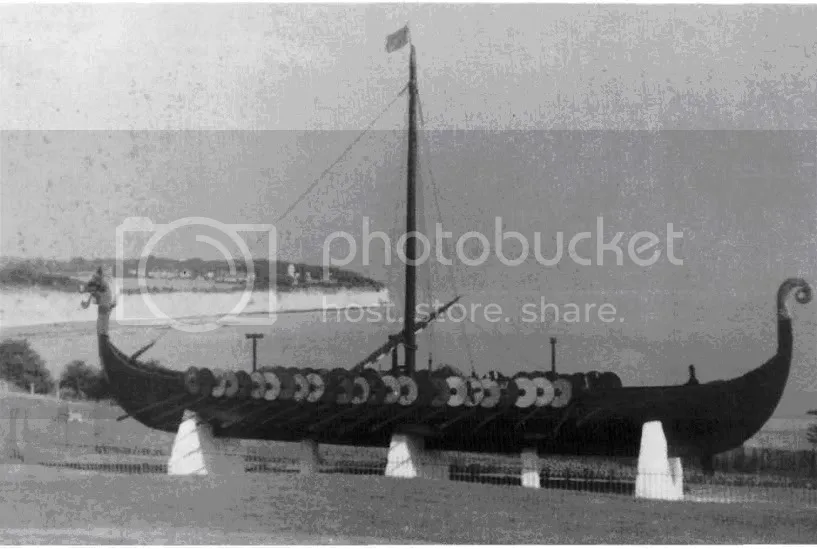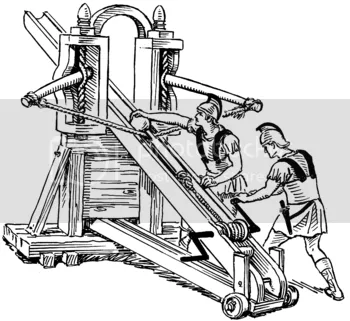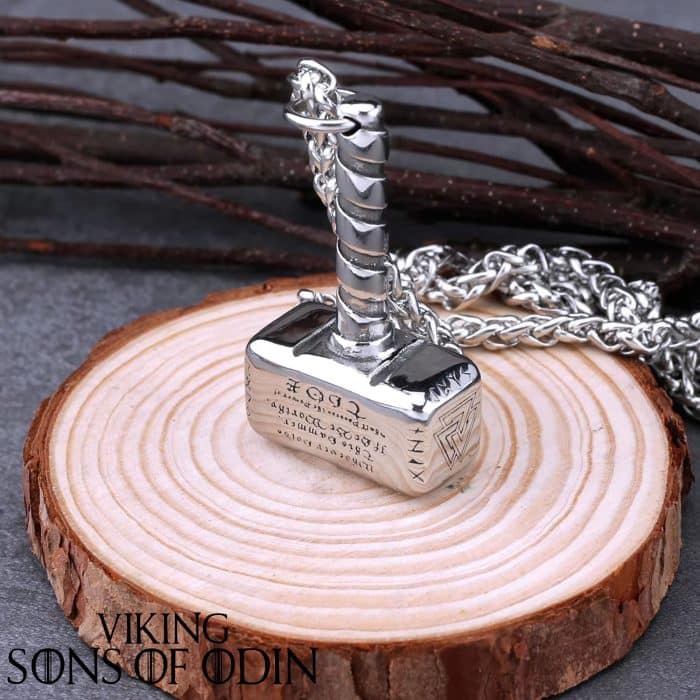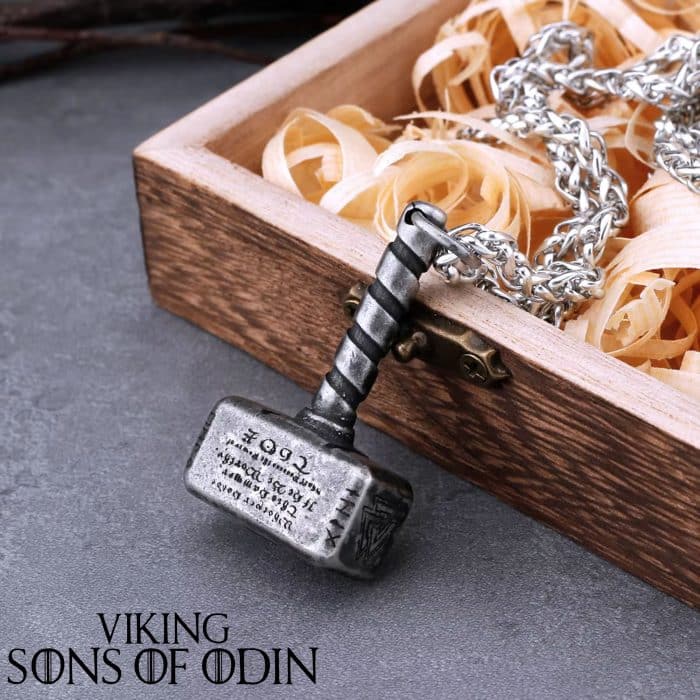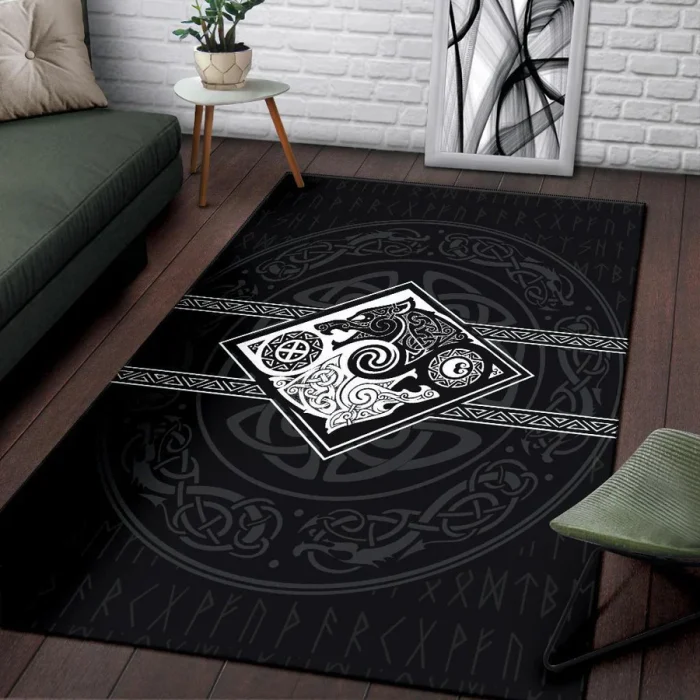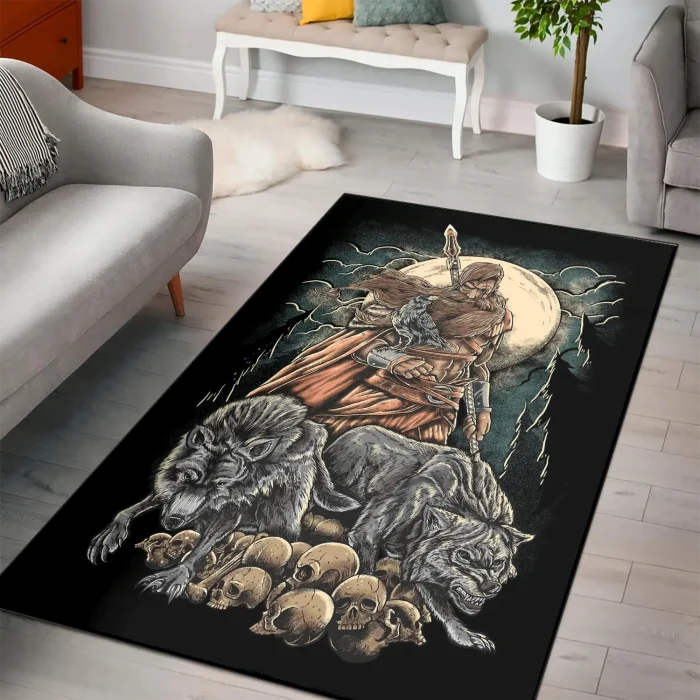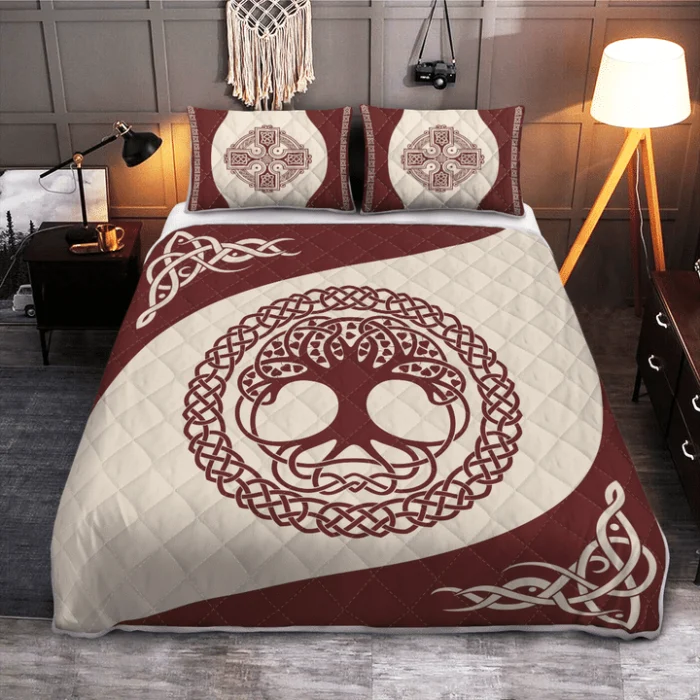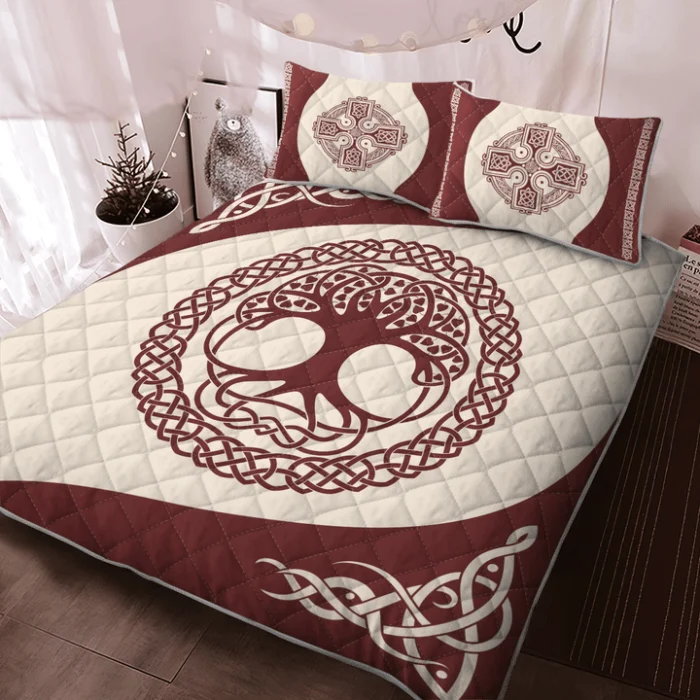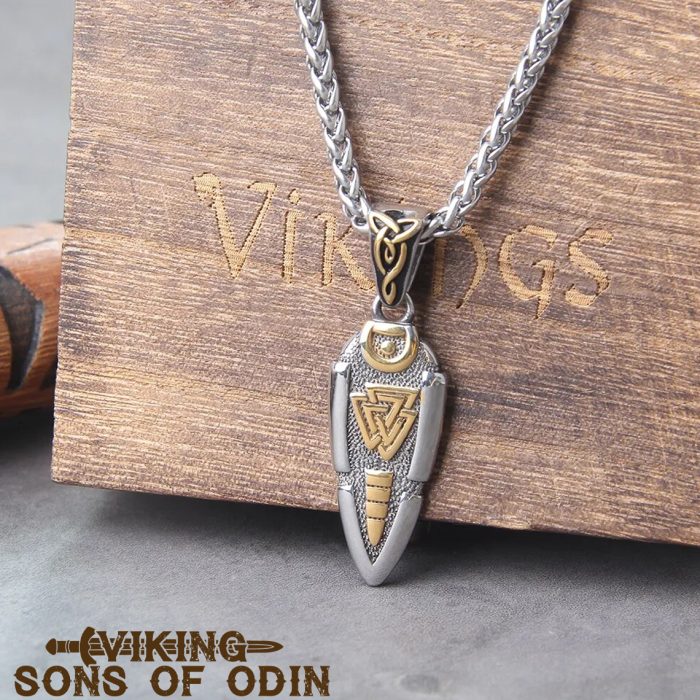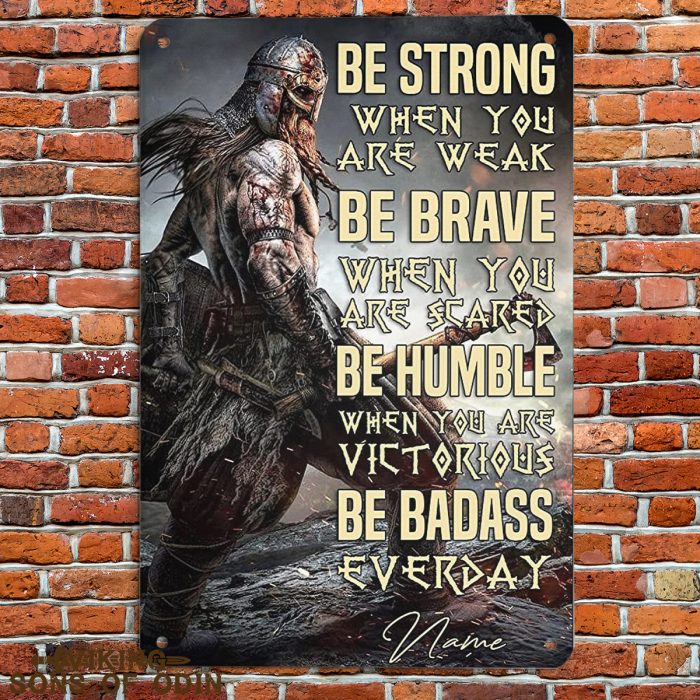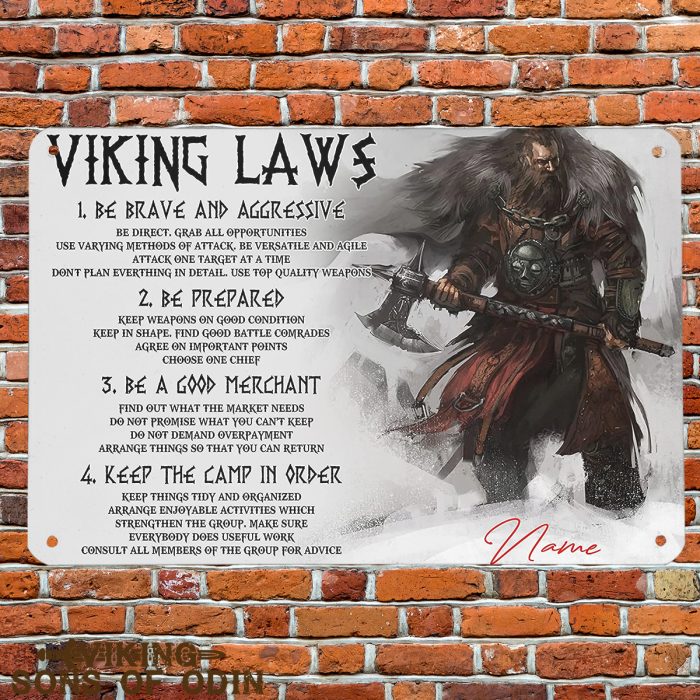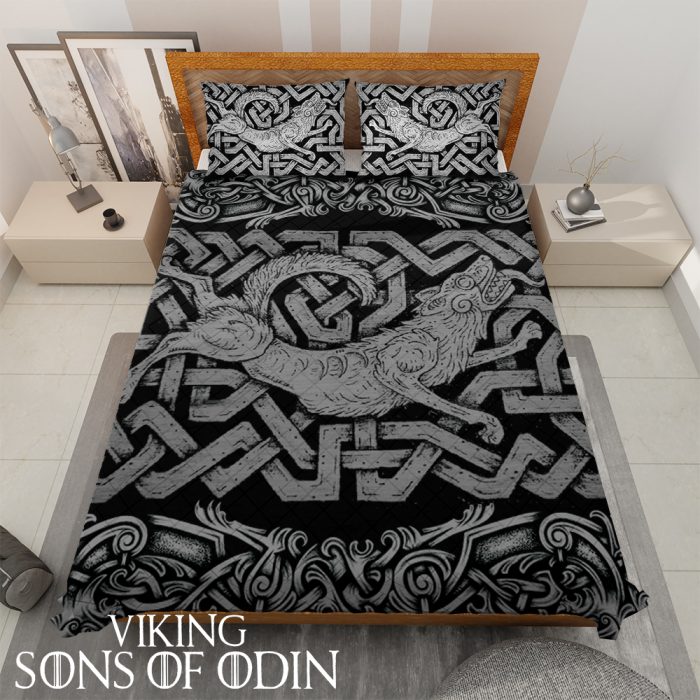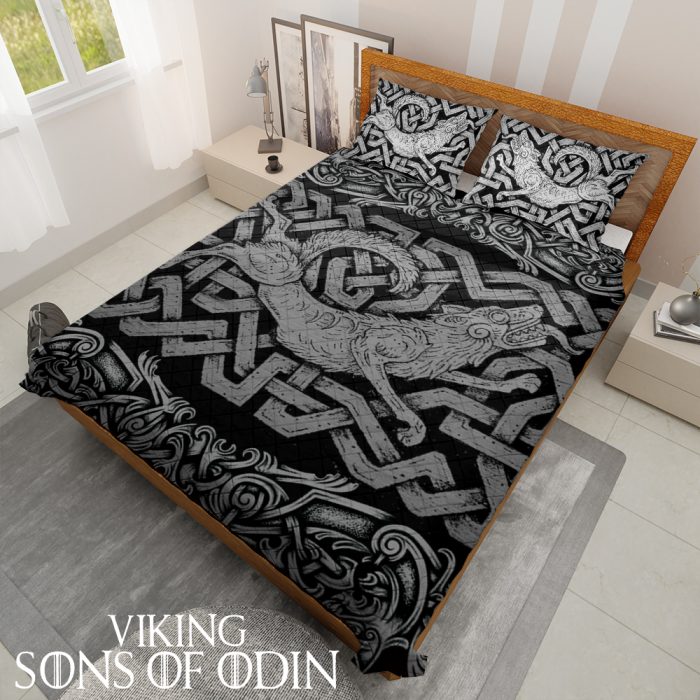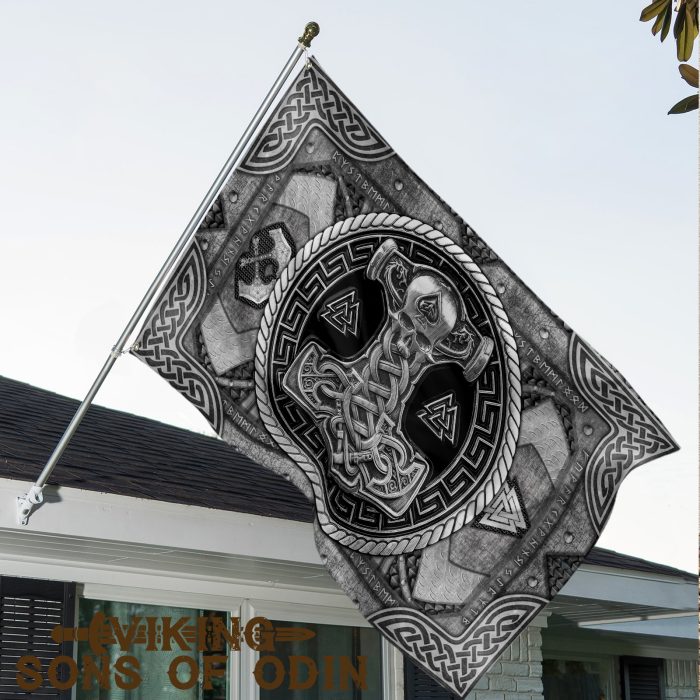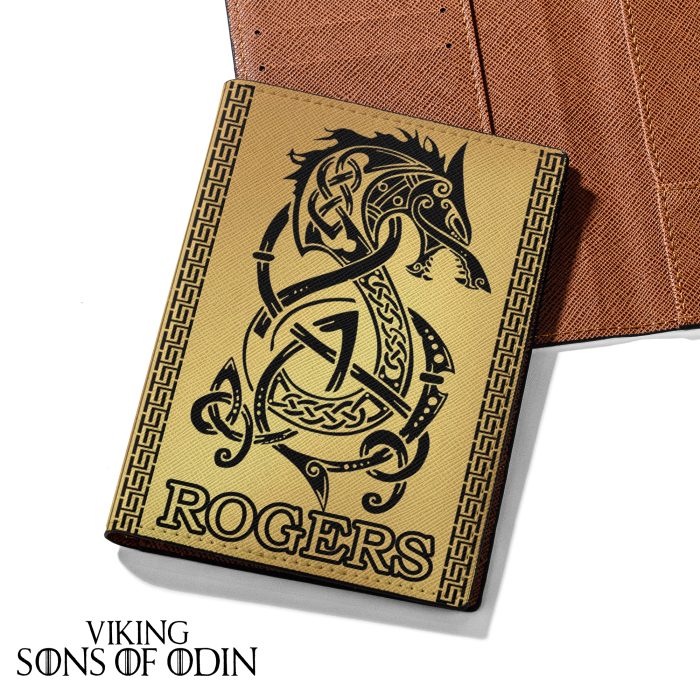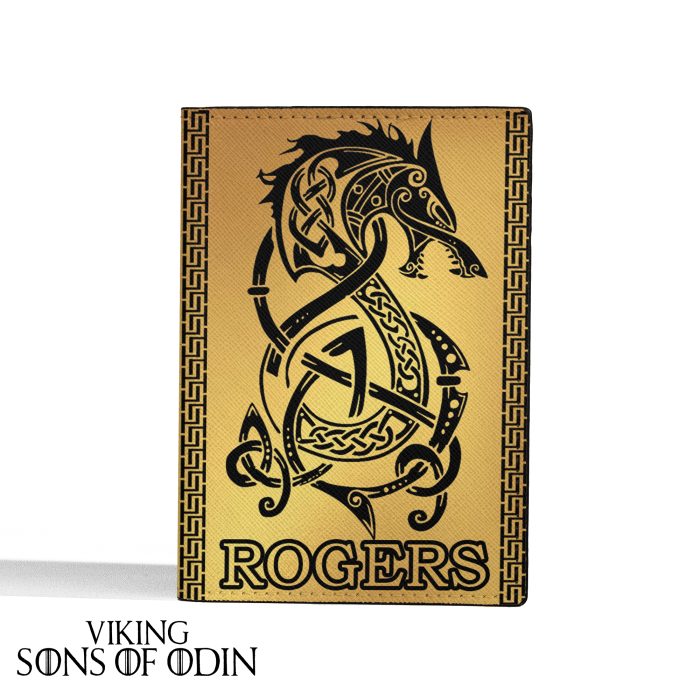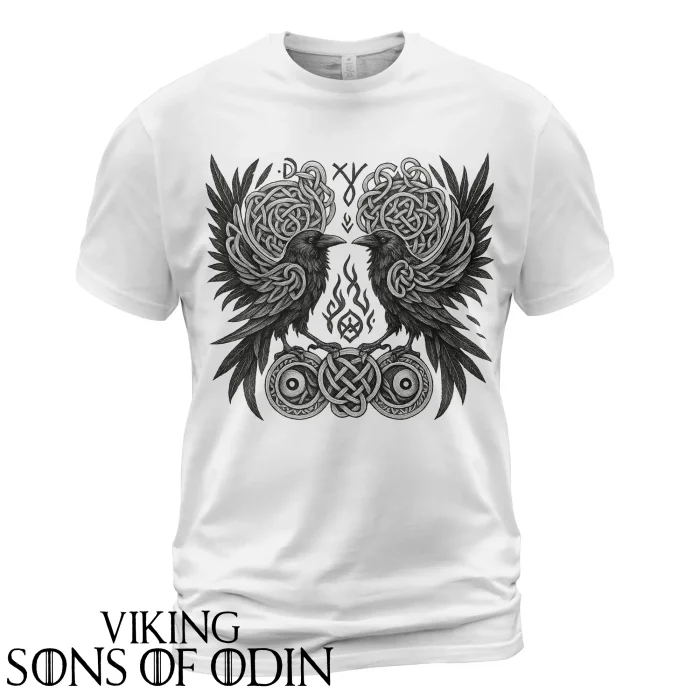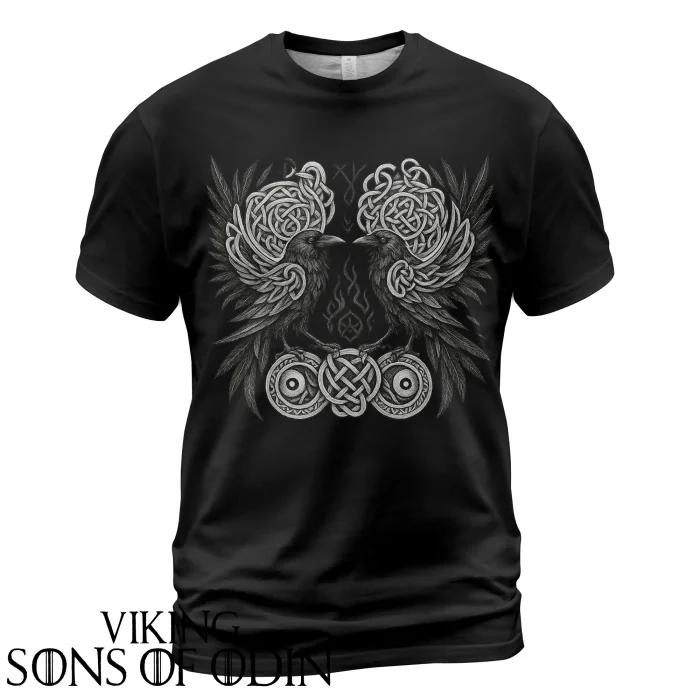Nordic Discovery, Viking
Viking Weapons and Armor
Initially, only a few of the Vikings were fully equipped with armor, helmets, swords, etc. (these were usually wealthy people) and weapons. This is often passed down from father to son (father to plunder, son to succeed his father), Viking soldiers were only equipped with family weapons and easily homemade weapons such as round shields, mace, knives. (can be used at home to butcher fish), long spear (this type needs a long handle and a bit of steel at the end), battle ax (this type of peacetime can be combined to cut firewood in peacetime) ), Javelin (also used for hunting in peacetime), bows and arrows… especially swords are rare because they are expensive (because to forge a sword, you must have good iron plus a very sophisticated sword forging technique).
Viking ships
The Viking technique of Clinker shipbuilding with layers of wood laminated on top of each other
Long-ships have a row of oars on each side of the ship so that it is not dependent on the wind on calm days.
The Viking Sailors’ rowing position
The two sides of the bridge are hung with colorful round shields
There is not much evidence to prove to the rest of Europe that the Vikings were skilled carpenters, great shipbuilders, skilled sailors. Although made of wood, many Viking ships survive today in remarkable condition because they were part of burial mounds, and the soil on which they were buried has kept them in good condition. . The famous ships found are those buried in the Norwegian cities of Gokstad and Oseberg. In fact, Viking ships were the best built ships of the time. The ships are built in a Clinker build, giving the hull enough flexibility to withstand the big waves and storms of the high seas. The ships are built according to the Clinker-build style, which is that they have a hull that is assembled from large wooden slabs stacked on a frame with transverse beams, joints are braced for waterproofing.
Photo of the hull of a 9th-century Gokstad Viking ship found in Vestfold, Norway
Textured image of the bow of a Viking ship in the museum of Oldsaksamling University, Oslo Norway
There are several different types of Viking ships for different purposes called drakkar, karve, snekker, skeider or knarr according to their sizes. One of the famous ships is the langskip (Long-ship), which is a canoeing with elegant lines that allows for high speed underwater. It is a fairly long vessel (about 20 meters or 65 feet) and quite narrow in width (either 5 meters or 16 feet) and can be launched in shallow water. Long-ships have only a central mast and a very colorful square sail, usually squared with blue, red or gray stripes. Each ship has a row of oars on the starboard and port side so they are not dependent on the wind on calm days. The ship is steered by a large oars in the stern and it works as a single oars. steering wheel. The curved nose and tail of a long-ship are often carved in the shape of beautiful wild animals – or often the head of a dragon is made of metal. Some rich people put gold or silver on their ships. These decorations glow in the sun and can be intended to impress enemies and scare away evil spirits. When ships enter or leave the port. The sides of the ship were hung with round shields and many sharp pieces. These shields will be removed when the ship reaches the sea.
Viking ships have a shallow bottom design, so they can swim close to the coast, or dock and swim upstream. By the end of the 8th century these ships were so perfected that they could sail out to the open sea.
The Viking merchant ships were quite different in shape from the long-ships. It has a wider and deeper body.
Siege of Paris
Hugin, the name of a ship recreated and built in Denmark by Gosktad, which swam across the North Sea in 1949 and is now on display at Pegwell Bay, County Ken – England
Going back to the meaning of the Vikings with the fall of the Carolingian dynasty, as we know from the second half of the 9th century, after the death of Emperor Charlemagne the Frankish kingdom fell into infighting. divided into East Frankish and West Frankish kingdoms, the kings who succeeded Emperor Charlemagne were all mediocre -> only interested in infighting without protecting their people, so the people Vikings regularly organized raids that grew larger and deeper into Frankish territory, and the siege of Paris was one such raid.
The Siege of Paris in 885-886 was a Viking siege of Paris, which later became the capital of the Frankish kingdom to the West. That is, one of the most important events of the reign of Emperor Charles the Fat and a turning point in the fate of the Carolingian dynasty and the history of France.
The Vikings (particularly the Danes from Great Britain and the Northerners of mainland Europe), were the main threats plaguing the kings of Europe in the late ninth century, and in the mid-nineteenth century. of the Viking Age. They established a land called Danelaw in England and were rulers of the Rus from Lake Ladoga to Novgorod. Their influence extends as far as the Mediterranean, They harass both Christians and Muslims, in the coastal plains and estuaries of France, Spain and Italy. The worst raided areas in the vast Carolingian Empire were the Lowlands and surrounding areas in the lands of Gaul and Germania, These areas had many rivers that were easily accessible by road. Water.
In 845, the Vikings sailed up the Seine and attacked Paris. And they also attacked three more times in the 860s, each time leaving only after looting and receiving ransoms they felt were acceptable. In 864, according to the Edict of Pistres, Many bridges were built on the Seine not only at Pîtres, but in Paris two bridges were under construction: one on each side of the Île de la Cité. These bridges would have served well during the siege in 885. The most senior ruler in the area around Paris (Île-de-France) was the duke of Francia (also duke of France). Paris), who controlled the lands between the Seine and Loire. The first was Robert the Strong, governor of Neustria and missus dominicus of the Loire valley. He began to fortify the fortresses of the old city and continued to fight the Northerners until he died in battle against the Vikings at Brissarthe. His son Odo inherited him and continued to fortify the fortresses of Paris.
Map of the city of Paris in the 9th century – Paris at this time was just a small town located in the middle of the Seine, the two bridges connecting Paris with the two banks of the Seine. It was these two bridges that prevented the Vikings from going deep inside France
Meanwhile, West Francia (the core of present-day France) was ruled by a series of kings for a short time until Fat Charles, king of Germany and Italy, became their king. Hopes of the reunification of Emperor Charlemagne’s Empire were rekindled, but just a year after Charles inherited the throne (in 884), the Vikings once again launched their biggest assault on Paris
The siege
Sigfred, the leader of the Danes, demanded a ransom from Charles but was refused. He quickly sent 700 ships up the Seine carrying more than 30,000 warriors, a number that is very questionable since even an army of one tenth of its strength is a medium-sized army. average at that time. Paris at this time was just a town on an island. Its strategic importance comes from its ability to block the passage of ships with two low bridges, one made of wood and the other made of stone.
Even the shadow of Viking ships could not cross Paris because of these bridges. Odo prepared for the arrival of the Vikings by fortifying the bridgehead with two watchtowers on each bridge. He had very few troops, no more than 200 armed men. He had the aid of his brother, Robert, along with two dukes, a marquis, and Joscelin, the head of the church in Saint-Germain-des-Pres.
The Vikings arrived on November 25, 885 and began by asking for tribute. This request was immediately denied, and they launched a siege. On November 26, the Danes attacked the northeastern towers with siege engines such as ballistae, mangonel and catapult, shooting at the towers with numerous arrows and stones. However, they were repelled by molten turpentine and tar mixtures. That day all the Viking attacks were repelled and at night the Parisians rebuilt the upper level of the tower.
Painting of some siege weapons that the Vikings could use to destroy Paris
Ballistae painting from Roman times – possibly used by the Vikings to destroy Paris
On November 27, a Viking attack was launched that included tunneling, siege, and rocket fire but to no avail. On that day the priest Joscelin bravely stepped out onto the ramparts and joined the battle with a bow and a battle ax. He planted a cross outside the defenses and exhorted all men to join the fight. His younger brother Ebles also joined the fight.
For two months, the Vikings dug tunnels, making trenches around their accommodation to avoid surprise attack. In January 886, they attempted to fill shallow river areas with debris, twigs, dead animals, and dead bodies (death prisoners) so that their infantry could reach them. area around the watchtowers, but they were again without success. They continued to do this for two more days and on the third day they set fire to three ships and directed them towards the wooden bridge. The ships that sank before them could have spread the flames to the bridge, but the wooden bridge however was weakened. On February 6, heavy rains caused the river (filled with debris from the Viking efforts of the previous week) to overflow and push the bridge’s support away. The bridge was broken, the watchtower in the northeast was now isolated with only twelve defenders inside. The Vikings asked these twelve to surrender but they refused and all were later killed.
The Vikings left a force behind, but the main force moved forward, out of Paris to plunder the cities of Le Mans and Chartres. At this point, Odo succeeded in sending some men across the Norse lines to Italy and begged Charles to send reinforcements to them. Henry, Earl of Saxony, Charles’ representative in Germany marched to Paris. The besieged Vikings were then dispersed and much of their supplies were transported into the city. The morale of the besiegers was very low, and Sigfred demanded sixty pounds of silver. He left the siege in April. Rollo another Viking leader and his men remained.
During the month, the plague began to spread throughout Paris and Joscelin, the spiritual leader and combatant cleric, died of the plague. Odo himself later crossed the Viking zone to ask Charles for help: Charles agreed. Odo fought his way back to Paris. Charles and Henry of Saxony marched north. Sadly for those under siege, Henry died en route.
In the summer, the Danes made one last attempt to capture the city but they were repulsed. The great army of the Empire appeared in October and caused the Vikings to disperse. Charles surrounded Rollo and his army and set up a barracks at Montmartre. However Charles had no intention of fighting. He sent his men down the Seine to ravage Burgundy because there was a revolt in the country. When the Vikings withdrew from France the following spring, he paid them the promised £700 silver.
Consequence
The refusal of the people of Paris and Odo to let the Vikings down the Seine prompted the invaders to tow their ships inland to the Marne. When Charles died in 888, the French people chose Odo as their king. Odo’s brother was later elected king. During the next century of the Robertian family, the descendants of Robert the Strong fought the Carolingians for the throne of France. Their duchy (France) was used to name the kingdom (later France) and the Carolingian Empire could never be reassembled.
Translation and editing : Viking Sons Of Odin




